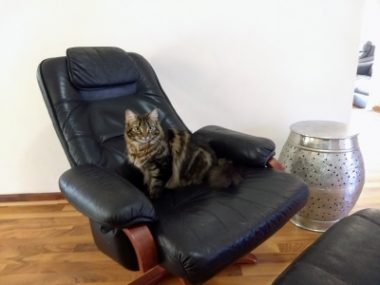Useful Tools That Help Us Manage AS at Home, Part 2
Even simple things can help with ankylosing spondylitis pain management
Written by |

Last in a series. Read part one.
Welcome back to my ultimate roundup of tools that help my husband, Dave, and I manage our ankylosing spondylitis (AS). Come on in to my virtual home, and let’s continue the tour!
Some of these tools might seem basic or simple, but when you need to use something daily, simple is best. It’s easy to overlook the basics, but they make all the difference to my pain levels.
Make the foam roller your best friend
You’d probably laugh if you caught Dave and me in the evening, rolling around on the floor in an undignified manner while doing our AS stretches. In our TV and lounge room, we keep the rug free of clutter or a coffee table and have a collection of foam rollers and trigger-point balls to use while we watch the news or an episode of “The Mandalorian.”
We have both short and long foam rollers, and they’re brilliant for stretching and massaging tight muscles along my spine, glutes, hamstrings, and even calves. Joint inflammation makes my muscles bunch up as tightly as a boa constrictor around a tasty rabbit, but the foam roller allows me to escape the squeeze.
I have a love-hate relationship with the trigger-point ball (or spiky massage ball, as it’s sometimes called). This firm little spiky ball is used to release tension in a specific place — like that little knot in my shoulder blades — but it can be painful, in a good way. (Cue the “Eeek!” noises as I hit the sore spots.)
Relax in a hot bath or spa
Treating my aching body to a hot bath or spa is one of my absolute favorite therapies. A hot shower is helpful, but there’s something extra soothing about floating in hot water. My mind slows down, the hectic world recedes, and I relax deeply. That level of relaxation is worth making time for, especially when things that used to be comfortable (like lying in bed) are often now uncomfortable after a few hours.
At our house, we have an outdoor spa, which is wonderful for helping my AS symptoms. Because differently placed water jets are in each seat, it’s perfect for hitting individual sore spots.
I was hesitant to write about our spa because I know it’s not something that everyone has the space or funds for. However, the spa is one of the most helpful tools we’ve tried, and in our case, it was worth making financial sacrifices to have it. If you’d like to try it for yourself, I’d recommend searching for a local public pool with a spa that you could visit.
Lean back and recline
The minute I walk into a restaurant, I’m eyeing the chairs. How’s the back angle? What’s the padding thickness? I’m a critical judge of uncomfortable chairs these days. Even five minutes of sitting in a thinly padded or too upright chair gets my sacroiliac (SI) joints throbbing to the point where I’d rather stand up.
My favorite chair in the house is a black leather reclining armchair with matching footstool, bought secondhand many years ago as my reading chair. When I have a sore back or hips from AS, I can only relax properly if I take the pressure off my SI joints.
A reclining chair or couch allows me to get the perfect angle, halfway between sitting up and lying down. I feel a bit like Goldilocks and the Three Bears — a comfortable chair must be not too hard, not too soft, and juuuuust right.

Jemma’s favorite reclining armchair, also enjoyed by Cookie the cat. (Photo by Jemma Newman)
Exercising at home
If you have an AS diagnosis, as Dave and I do, I wouldn’t be surprised to hear that your rheumatologist told you that keeping mobile is vital. It’s not always possible to leave the house to visit the gym or even go for a walk, so we invested in a few simple exercise tools to keep us moving.
A stretchy band, Swiss ball (also called a physio ball), and yoga mat are all I need to complete a few rounds of body-weight exercises. Dave uses a set of dumbbells to sweat his way through a rigorous workout from home, though he carefully avoids all exercises that make his AS worse, such as squats and lunges.
That wraps up my favorite tools around the home that help us manage AS. I’m always looking for different ways to manage this chronic disease, so please do comment below with any of your own tools or ideas.
Reminder: Always speak to your doctor or healthcare provider before trying new stretches, self-massage, or exercises, to prevent injury.
Note: Ankylosing Spondylitis News is strictly a news and information website about the disease. It does not provide medical advice, diagnosis, or treatment. This content is not intended to be a substitute for professional medical advice, diagnosis, or treatment. Always seek the advice of your physician or other qualified health provider with any questions you may have regarding a medical condition. Never disregard professional medical advice or delay in seeking it because of something you have read on this website. The opinions expressed in this column are not those of Ankylosing Spondylitis News or its parent company, Bionews, and are intended to spark discussion about issues pertaining to ankylosing spondylitis.







Leave a comment
Fill in the required fields to post. Your email address will not be published.